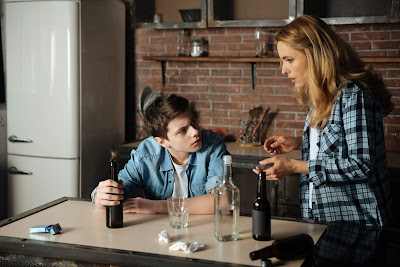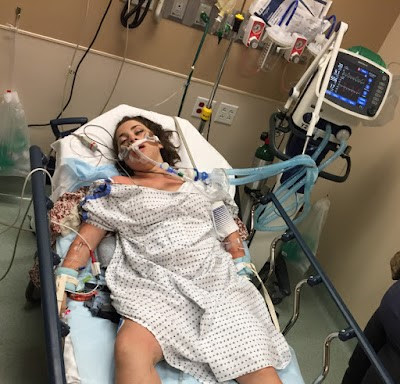What does '4 drinks' actually mean as far as a young person is concerned? How much are they actually drinking?
 Earlier this week I discussed (again) the bizarre phenomenon of parents hosting post-formal events who include on the invitation that those young people attending are able to bring up to four cans to drink at the event. As I said then ... "Do the parents hosting this event realize how much alcohol that actually is?" Even if each can (or bottle) was the equivalent of one standard drink (which it rarely is), that is still four standard drinks ... The Australian Guidelines to Reduce Health Risks from Drinking recommends that "for healthy men and women, drinking no more than four standard drinks on a single occasion reduces the risk of alcohol-related injury arising from that occasion" - and that's for adults! No number of drinks is recommended for those under 18 years of age, with the guidelines stating that "not drinking alcohol is the safest option."
Earlier this week I discussed (again) the bizarre phenomenon of parents hosting post-formal events who include on the invitation that those young people attending are able to bring up to four cans to drink at the event. As I said then ... "Do the parents hosting this event realize how much alcohol that actually is?" Even if each can (or bottle) was the equivalent of one standard drink (which it rarely is), that is still four standard drinks ... The Australian Guidelines to Reduce Health Risks from Drinking recommends that "for healthy men and women, drinking no more than four standard drinks on a single occasion reduces the risk of alcohol-related injury arising from that occasion" - and that's for adults! No number of drinks is recommended for those under 18 years of age, with the guidelines stating that "not drinking alcohol is the safest option."Once again, I realize that 'not drinking alcohol' is not realistic for many young people, but this idea that four drinks is an appropriate (and safe) number for parents to provide to their teens is frightening.
To find out if this issue spreads further than just post-formal events, during the week I spoke to a number of students from Years 10-12 and asked them some simple questions about the last time they drank alcohol. I wanted to know who provided the alcohol, how much they provided, what type of alcohol was it, and how much they drank (did they drink more than they were given?)? I also asked what context they consumed the alcohol - i.e., at home, parties or gatherings, pre-parties or elsewhere. Now I realize that the results are not scientific and may not be representative (although I'd love to do a real study on this!) but they certainly appear to indicate that amongst the parents of those young people who do drink alcohol, there appears to be a poor understanding of the sheer amount some of them are consuming and the potential harm associated with such behaviour. Also, I was amazed to find out how many of these young people had the alcohol provided to them by their parents.
Although alcohol was usually consumed at parties and gatherings (almost all of the Year 12s reported drinking in this context), the younger the students, the more likely it was to be drunk at pre-parties where there was no adult supervision. Some of the older young men drank beer (usually Year 12s), but the majority of them drank spirits (vodka or bourbon) or spirit-based drinks (UDL bourbon-based drinks being the most popular). Every girl who said they did drink had consumed vodka or vodka-based drinks (Smirnoff Double Blacks being the way most popular). Most of the alcohol consumed by the Year 11s and 12s was supplied by parents, with the rest saying they had bought it themselves because they had part-time jobs. The 10s were very mixed in their response to this question. Some had got it from their older siblings, others from friends or partners (particularly the girls with older boyfriends), while the rest had parents who provided it. Interestingly, of those that were given alcohol by their parents, only about one third of them drank more than they were provided (those that did drink more drank an awful lot more than they were given - some of them double the amount, usually by way of sharing a bottle of spirits with a group of friends!). This may sound like a good argument for parents to actually supply the alcohol, but when you see how much they were actually given, it's not surprising that they didn't drink more! When asked why they only drank what they were given, most of them said that amongst their peer group it just wasn't acceptable to drink other peoples' alcohol - you drank what you brought with you or what you bought and paid for together.
Of those who were given alcohol by their parents, the sheer amount provided by many was staggering and clearly illustrates that some parents simply don't understand how much alcohol is in a can or bottle that they hand over to their child. Some of the responses to the question were as follows:
- "My Dad gives me a 6-pack of beer to take with me. I've been given that since the end of Year 10. They don't want me to drink spirits like my mates." (Year 12 male)
- "I have three Smirnoff Double Blacks, sometimes 4 depending on what kind of party it is and whether my parents know the people who are hosting it." (Year 11 female)
- "Usually 4 bourbon and cola UDLs. My parents have said that if they catch me drinking straight spirits then that'll stop but they've been giving me this much since the end of Year 10." (Year 11 male)
- "Two Smirnoff Double Blacks. I told my Mum that all my friends drink vodka and that I think that's dangerous and I am able to better control my drinking with these drinks and not get into trouble." (Year 10 female)
- "Four beers and never anymore. Mum and Dad have said they don't want me to drink spirits and have said that beer is safer. Some weeks I start off with a couple of shots of vodka with my mates just to get the night going but that's about it." (Year 10 male)
- A 6-pack of beer is going to be around 8.2 standard drinks (full-strength - 1.2 per can), around 6 (mid-strength - 1 per can) and 4.2 standard drinks (light - around 0.7 per can). Of course this varies depending on brands (cans and bottles can vary slightly but not too much usually) but realistically that's a lot of alcohol. I also need to say that not one of the young men who said they drank beer admitted to drinking light beer, with one Year 11 saying that that would be 'social suicide'!
- The number of standard drinks in bourbon and cola UDL cans vary depending on whether they are the 'normal strength' or 'black label' variety. Four of these cans can amount to anywhere from 4.8 to 6 standard drinks if they are the cheaper variety, up to 7.6 for the higher strength versions
- Four Smirnoff Double Blacks (the most popular drink amongst the girls) results in them consuming 7.6 standard drinks – more than a third of a bottle of vodka!
These are parents who truly love their kids - I don't for a minute think they are intentionally trying to put their kids into harm's way. In fact, I think it's just the opposite - they're trying to protect their child. So many of the young people I spoke to said that their parents made it very clear that they didn't want them to drink spirits. Unfortunately they just don't seem to have any clue as to exactly how much alcohol they are actually providing their teens - at least, I hope that is the case. For if there is any parent who truly believes that they're keeping their child safer by providing them with the equivalent of well over a third of a bottle of spirits to take to a party or gathering (because that's what a 6-pack of beer or 4 Smirnoff Double Blacks actually is) we really have a problem!



My friend drinks a lot. After four drinks he becomes very over-confident and he laughs for no good reason. That's what happens to him. Thank you for sharing the post.
ReplyDeleteRegards,
Mantis Hugo
Goji Berry Juice